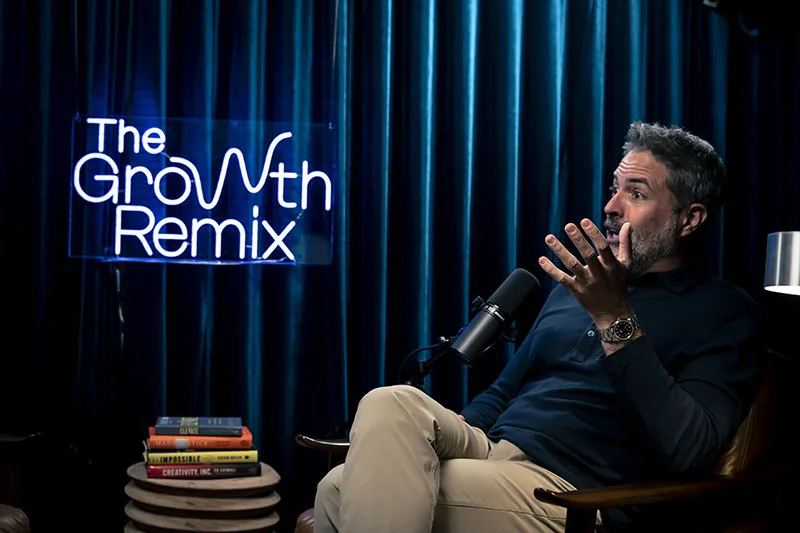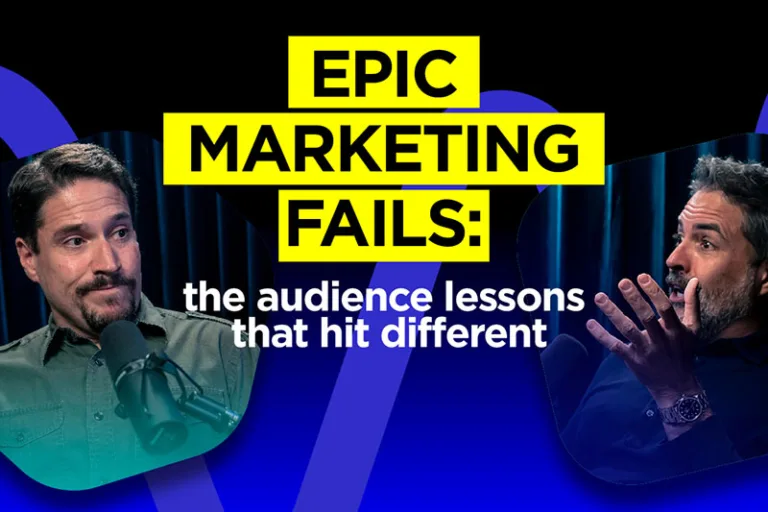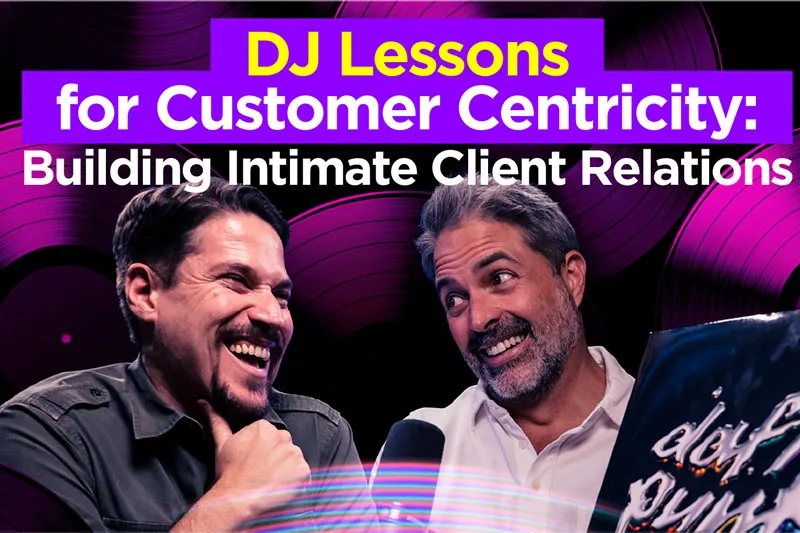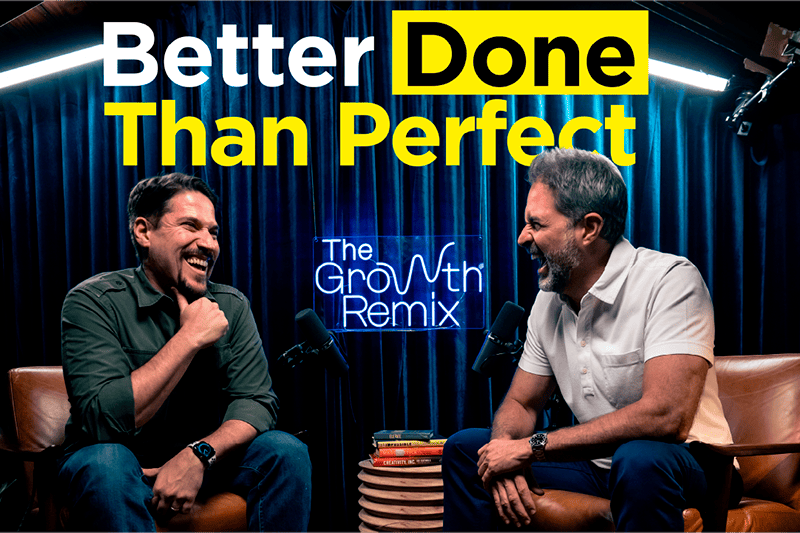Episode 5 of The Growth Remix dissects history’s most famous marketing disasters and reveals how nightclub experience prevents catastrophic audience misunderstanding.
The distance between a DJ reading an empty dance floor and a marketing executive launching a tone-deaf campaign might seem vast, but both scenarios share a critical common element: the catastrophic cost of misunderstanding your audience. In Episode 5 of The Growth Remix, Carlos Cobián and André Carlo explore how desktop marketing assumptions create some of history’s most spectacular business failures—and how field-tested audience reading techniques can prevent them.
“The problem comes largely because people assume. It’s the problem of desktop marketing,” Carlos explains. “Many people working in marketing never leave the office and are far from consumers. They don’t interact with them, they don’t know them.”
The Pepsi-Kendall Jenner Disaster: A Case Study in “Tone Deaf” Marketing
Few marketing campaigns have failed as spectacularly and as publicly as Pepsi’s 2017 advertisement featuring Kendall Jenner. The campaign, launched during the height of Black Lives Matter protests and social justice movements, depicted Jenner leaving a photo shoot to join a protest, ultimately resolving tensions by offering a Pepsi to police officers.
The backlash was immediate and devastating. “Completely tone deaf,” Carlos reflects. “They thought they were going to be very playful and creative and appeal to their young audience by making a campaign with an influencer who has many followers. But they ended up minimizing and removing prestige from a legitimate civil rights movement.”
The campaign forced Pepsi to retract the advertisement, issue public apologies, and manage a massive crisis that could have been entirely avoided with proper audience understanding. The failure wasn’t in the execution—it was in the fundamental misreading of their audience’s values and sensitivities during a highly charged social moment.
New Coke: When Companies Change What Customers Love
The conversation shifts to an even more legendary marketing failure: Coca-Cola’s introduction of “New Coke” in 1985. Feeling pressure from Pepsi’s aggressive marketing campaign targeting younger consumers with “The Choice of a New Generation,” Coca-Cola made a decision that would become a textbook example of customer misunderstanding.
“Coca-Cola felt pressure that they were eating into their market share,” André explains. “So they decided to make a new formula, New Coke, that was similar to Pepsi’s flavor—sweeter, they changed the formula. And their customer base got angry and said, ‘Why are you messing with this? There was nothing wrong with it.'”


The emotional connection between Coca-Cola and its consumers ran deeper than taste preferences—it was tied to tradition, nostalgia, and identity. The company had to eliminate the new product and launch a massive rebranding campaign to return to the “original recipe” with new packaging emphasizing authenticity.
Both cases illustrate a fundamental truth: companies that assume rather than truly understand their audience’s deeper motivations and emotional connections are destined for spectacular failures.
Empire Entertainment: When You Are Your Own Customer
Carlos shares a contrasting example from his entrepreneurial experience with Empire Entertainment, one of Puerto Rico’s most successful event companies. Starting at age 21-22, he was creating parties and events for people his exact age—a situation that provided invaluable customer insight.
“I was my own customer. I had the insights, I understood the pain points, I understood what the problem was. I was dissatisfied as a consumer and created a product for myself,” he explains. “Therefore, every time we did an event or whatever, it was super successful because we not only knew the audience—we knew it because we were part of the audience.”
The company grew to 100 employees, with 20-30 full-time staff and the rest being promoters throughout Puerto Rico. Crucially, the office was filled with young people. “The office was kids. Everyone was kids in the office,” Carlos notes. “Empire was a constant focus group. We lived immersed in a focus group.”
This authentic connection to their target market gave Empire Entertainment a competitive advantage that traditional market research couldn’t replicate. When advertising agencies wanted to understand youth trends, they would hire Empire—and the insights provided consistently matched expensive formal research studies, but with the added benefit of real-time, lived experience.
The Desktop Marketing Trap
The Empire Entertainment example highlights a critical distinction between desktop marketing and field research. Desktop marketing—making assumptions about customers from the comfort of an office, without direct interaction—creates dangerous blind spots.
“When you’re not part of that, you’re not in the mix, you’re not inside, and you’re a desktop marketing person who doesn’t go to the field, isn’t close to your customers, doesn’t listen to them, doesn’t observe them,” Carlos warns. “You don’t see what they’re doing, you’re going to fail. You’re blind. You’re totally assuming.”
The problem becomes more complex when marketers’ personal backgrounds don’t align with their target audiences. Social and economic differences between marketing teams and customers can create fundamental misunderstandings about values, priorities, and communication preferences.
Beyond Demographics: The Psychology of Audience Understanding
André expands on the practical implications of deep audience research, emphasizing the difference between demographic data and psychographic understanding. “We develop what they call buyer personas in our industry. In other words, it’s designing a profile that’s representative of your ideal client,” he explains.
This process goes beyond basic demographic information—age, gender, location—to include psychological factors like interests, motivations, fears, and aspirations. “Nothing will substitute having direct conversations with those audiences,” André emphasizes.
At Gravital Agency, this means requesting interviews with both satisfied and dissatisfied customers. “We ask them to get us appointments and interviews with their real customers—customers who are satisfied and those who are dissatisfied, because you also have to listen to those people. You have to listen to complaints. Sometimes they’re the most important.”
The Framework for Real Customer Understanding
The episode reveals Gravital’s systematic approach to audience research:
Direct Customer Interviews: Rather than relying on assumptions or secondary research, they insist on direct conversations with real customers. These interviews explore not just what customers say they want, but their underlying motivations and concerns.
Satisfied and Dissatisfied Customer Analysis: Understanding why customers are unhappy often provides more valuable insights than focusing only on positive feedback. Complaints reveal gaps between expectations and delivery that can guide strategic improvements.
Psychographic Deep Dive: Moving beyond basic demographics to understand interests, values, lifestyle preferences, and decision-making patterns. This includes understanding how customers prefer to receive information and what captures their attention.
Continuous Feedback Loops: Rather than conducting research once, maintaining ongoing conversations and feedback mechanisms to track changing customer needs and market conditions.
The Steve Jobs Paradox: When Customers Don’t Know What They Want
The conversation addresses a fundamental tension in customer-centric business strategy: sometimes customers themselves don’t know what they want or need. Carlos references Steve Jobs’s famous observation: “If you ask people what they want, they won’t tell you what they need. They’ll tell you what they want, but it’s going to be basically the same.”
This creates a delicate balance between customer input and market innovation. “Sometimes your customer doesn’t know what they want or need,” Carlos notes. “But there are also situations where customers don’t know what they want or need.”


The solution requires combining empathetic listening with critical thinking and market analysis. Companies must understand customer pain points and desires while also recognizing opportunities to guide customers toward solutions they haven’t yet imagined.
The Empathy vs. Compliance Distinction
André clarifies a crucial point about customer centricity: “The customer is always right—yes and no. Sometimes yes, sometimes no.” The key lies in understanding the difference between customer empathy and customer compliance.
True customer service involves putting yourself in the customer’s shoes and understanding their perspective, even when their requested solution isn’t optimal. “We have to exercise compassion and empathy, which is being able to put yourself in their shoes. And from their perspective, not ours, then look for solutions—whether products or services—that solve what they want to achieve.”
This approach requires courage and long-term thinking, as it sometimes means saying no to immediate revenue opportunities to serve the customer’s actual needs.
Music, Mood, and Market Psychology
The episode begins with a discussion about musical preferences that reveals deeper insights about audience psychology. Carlos discusses discovering Catriel and Paco Amoroso, two Argentine artists who blend indie influences with reggaeton, and how this led to broader musical exploration through Pandora’s algorithm.
André shares his own musical journey, describing how he moves through different “moods”—from folk rock inspired by a movie soundtrack to a renewed focus on reggae music. “I’ve kind of become an advocate because I came to a weird conclusion—man, you don’t hear much good reggae out there,” he explains.
This musical conversation illustrates several key principles about audience understanding:
Audience Fluidity: People’s preferences change based on mood, context, and exposure to new experiences. Understanding audiences requires recognizing this complexity rather than assuming static preferences.
Cross-Genre Appeal: Artists like Catriel and Paco Amoroso succeed by blending influences, suggesting that audiences often appreciate authenticity and creativity over strict genre adherence.
Personal Mission and Advocacy: André’s mission to expose people to “good reggae” demonstrates how authentic enthusiasm can drive effective content and audience engagement.
Practical Implementation: From Theory to Action
The episode provides several concrete strategies for implementing better audience understanding:
Pre-Event Research: Just as Carlos researches his DJ audiences before every performance, marketers should gather specific information about their target audiences before launching campaigns or products. This includes understanding current mood, context, and specific preferences.
Real-Time Adjustment: Carlos describes his “lead mood test”—using his first five songs to test audience response and adjust accordingly. Marketing campaigns should include mechanisms for real-time feedback and adjustment.
Direct Source Intelligence: Rather than relying on secondary information, Carlos calls the opening DJ to understand the crowd’s mood and energy. Marketers should develop direct channels to their target audiences.
Observation Over Assumption: “All the time I’m playing, I’m playing, but I’m not wrapped up in my own thing looking at my records. I’m always looking at the dance floor,” Carlos explains. This constant audience observation should be replicated in marketing through social media monitoring, customer feedback analysis, and behavioral data tracking.
The Competitive Reality of Audience Mastery
In today’s information-saturated marketplace, audience understanding isn’t just a nice-to-have—it’s a competitive necessity. Companies that develop superior audience insight create sustainable advantages that are difficult to replicate.
The episode demonstrates that this understanding can’t be purchased through research reports or developed through demographic analysis alone. It requires genuine engagement, continuous learning, and the humility to recognize when assumptions are wrong.
The Cost of Assumption
Both the Pepsi and New Coke failures represent millions of dollars in losses that could have been prevented with better audience understanding. But beyond financial costs, these failures demonstrate the reputational damage that occurs when companies appear disconnected from their customers’ values and needs.
In contrast, companies like Empire Entertainment and Gravital Agency, which prioritize genuine audience connection, create more effective campaigns and stronger customer relationships with lower risk of spectacular failure.
Building an Audience-Centric Organization
The conversation reveals that true audience centricity requires organizational commitment, not just marketing department initiatives. Empire Entertainment’s success came from having an entire organization that embodied their target demographic. While not every company can replicate this exact model, the principle remains valuable: organizations perform better when they maintain genuine connections to their customer base.
This might involve hiring practices that reflect customer demographics, creating customer advisory boards, or establishing regular customer interaction requirements for leadership teams.
The Growth Remix Promise
Episode 5 of The Growth Remix delivers on the podcast’s core promise: revealing how seemingly unrelated experiences—like DJ performance—provide powerful frameworks for business success. By connecting nightclub dynamics to marketing strategy, Carlos and André demonstrate that the most valuable business insights often come from unexpected sources.
The episode shows that preventing marketing disasters requires more than creative talent or budget allocation—it demands the discipline to truly understand your audience at a psychological and emotional level, combined with the courage to act on that understanding even when it’s difficult or counterintuitive.
As businesses continue to navigate increasingly complex customer landscapes, the lessons from The Growth Remix become more valuable: authentic audience connection isn’t just about avoiding epic fails—it’s about creating the deep customer relationships that drive sustainable growth and genuine competitive advantage.


